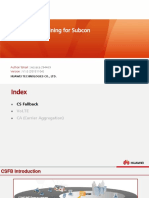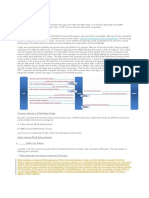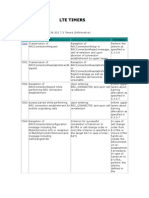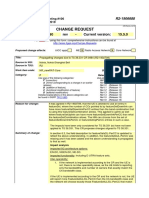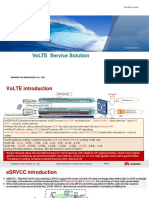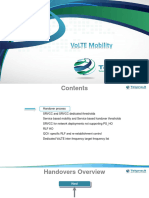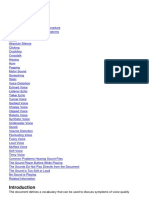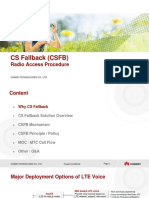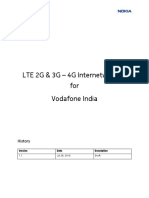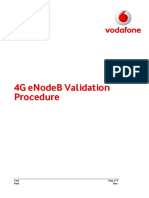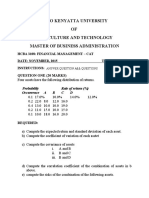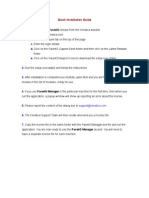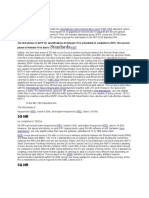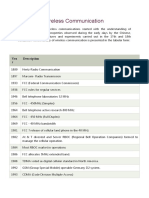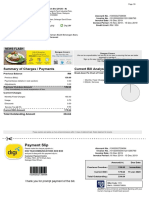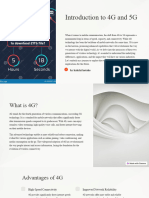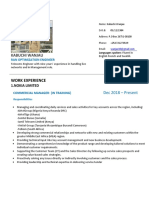CSFB optimization
Radio LTE optimization and LTE SON & Site
Integration process workshop
Milan , 26-27 May 2015
C2 Vodafone Restricted
�Agenda
1. CSFB principle
2. Performance key factors
3. Call phases
4G leaving and RAT camping
Legacy RAT registration
4. Case study: MOC 4G to MTC 3G
Insert Confidentiality Level in slide footer
C2 Vodafone Restricted
�CSFB principle
Voice evolution in three steps:
From Single radio to Convergence
Source: Qualcomm
Longer call setup time (+2/3 sec with 3G as landing RAT)
Additional 3,5s in case of CSFB to 2G
Worse Call Setup Success Rate (1%)
C2 Vodafone Restricted
June 9, 2015
�Performance key factors
Overall call setup time performance strongly depends on the
scenario considered and radio/core implementation
- Call scenarios: Mobile-to-Mobile or Mobile to Fixed/ISDN benchmark tests might
have very different performance in terms of call setup time and accessibility.
- Landing radio access technology: preferred technology and radio fallback strategy
are crucial for determining the average call setup time.
- Core Architecture: Overlay MSS or pooling Core CS architecture could significantly
impact call setup time performance.
- NAS procedures: frequency of security procedures (Authentication, Identity, )
executed during call setup might introduce high variance in the overall setup time.
C2 Vodafone restricted
June 9, 2015
�Common phases for MOC and
MTC:
1.
2.
3.
4.
5.
4G leaving
Legacy RAT camping
Legacy RAT registration
Setup
Alert
C2 Vodafone restricted
Mobile Terminated call
Identification of
call setup phases
and relevant
trigger points
Mobile Originated call
Call phases MOC and MTC
June 9, 2015
�4G leaving and RAT camping /1
Accessibility
Call Setup
Time
Operational
effort
Commercial
Drivers
RRC Release with Redirect
1. Basic without target RAN System Information (SI) :
Easy implementation and fast deployement, longer call set-up time because SI needs
to be fetched by the UE in the target RAN
2. Enhanced CSFB:
i.
Deferred Measurement Control Reading (WCDMA)
RACH access is performed after reading SIB 1,3,5 and 7 only (SIB11 containing
neighbour info are sent in the Measurement control message) . Valid for >Rel7
UE . Gain: hundred ms. SIB caching implementation in the device could prevent
the usage of deferred SIB.
ii.
SI exchange based on 3GPP RIM procedures (GSM and WCDMA)
System Info are provided via LTE redirection message (via core network ). Gain :
0,8s in 3G and 2.5 in 2G
PSHO (Packet Switched Handover)
3G cell measurement are performed and if a 3G suitable cell is found, the PS handover
to UE is sent (improve call setup time ~0,8s and accessibilty).
C2 Vodafone restricted
June 9, 2015
�4G leaving and RAT camping /2
Landing technology strategy is crucial for guaranteeing a good
level of accessibility and call setup time
HIGH
Start Band
LOW
LANDING TECNOLOGY / BANDS
L1800
U2100
U900
G1800
G900
L2600
U2100
U900
G1800
G900
L800
U900
G900
other
Strategy is based on the footprint of the different
coverage layers taking into account the propagation
of each layer.
In case of non-contiguous/homogeneous layer,
hybrid solution with different CSFB implementation
could be adopted.
7
C2 Vodafone restricted
June 9, 2015
�4G leaving and RAT camping /3
In case of Mobile terminated call, paging timer and repetition scheme
influence call setup time
CS paging repetition timer (from UE
perspective) has to be carefully set.
Depending on the total number of
repetition available on MSC, paging
repetition on both MME and eNodeB
could be exploited.
Fine tuning of DRX cycle and
paging occasion settings for
saving time in order of tens
milliseconds
C2 Vodafone restricted
June 9, 2015
�Legacy RAT registration
Not-pooled (GMSC) architecture
Pooled MSC architecture
In a pure not-pooled MSC architecture , fallback
always occurs in MSC that are different from the GMSC and Location Update procedure is needed
(inter-MSC scenario with HLR involved) during call
setup.
In a pure not-pooled MSC architecture, LAU is not
performed during the call setup Real Combined
TA/LA Direct SG interface (MME-MSC)
Each legacy MSC has dedicated virtual LAC.
MME is configured with a mapping between
TACs and virtual LAC of the MSC. in legacy
MSCs: each virtual LAC points to overlay MSC
Fast implementation from operational perspective but
longer setup time in CSFB MOC and MTC and lower
reachability in MTC due to a frequent Loc. Upd.
Call setup time improvement
Avoidong Location Update, call setup is shorter
(500ms) but potential short period of unreachability
after the call.
CSMT FLAG Essential to avoid the paging lost after LAU and reallocate signalling resources on the A-interface. LA Update & call
setup performed in one single radio connection setup
Mobile Terminating Roaming Forwarding (MTRF)
Avoid release the call leg to the G-MSC, reducing signalling flow and
MTInsert
procedure
Confidentiality Level in slide footer
C2 Vodafone restricted
Increased complexity in radio planning and MME
TAC/LAC mapping
9
June 9, 2015
�Case study: MOC 4G to MTC 3G Message flow
C2 Vodafone restricted
10
June 9, 2015
�Case study: MOC 4G to MTC 3G Typical performance
All Operators with:
RRC Release with Redirect
Preferred landing technology: UMTS
Pooled MSC architecture
C2 Vodafone restricted
11
June 9, 2015
�Case study: MOC 4G to MTC 3G Time distribution 1
side1(from 4G RRC conn release to 3G RRCconn req)
100,00%
90,00%
80,00%
70,00%
60,00%
50,00%
40,00%
30,00%
20,00%
10,00%
0,00%
0,23
0,43
0,52
0,61
0,7
0,79
0,88
0,97
1,06
1,15
1,24
1,34
1,43
1,52
1,61
1,7
1,79
1,88
1,97
2,06
2,16
2,27
2,36
2,48
2,58
2,69
2,79
2,91
3,02
3,25
3,95
4,54
5,31
Operator A
OperatorEEB
OperatorTelefonica
C
Three
Vodafone
Operator D
Operator C:
More session with UMTS
landing technology
Deferred SIB
Duration [s]
C2 Vodafone restricted
12
June 9, 2015
�Case study: MOC 4G to MTC 3G Time distribution 2
side1 (from call proceeding to alerting)
100,00%
90,00%
80,00%
70,00%
60,00%
EE A
Operator
Telefonica
Operator
B
Three
Operator C
Vodafone
Operator D
50,00%
40,00%
30,00%
20,00%
10,00%
Operator C:
No Authentication/Cyphering
procedures
Early RAB assigment on
Terminated side
0,05
0,52
1,17
1,76
2,04
2,26
2,48
2,7
2,92
3,14
3,36
3,58
3,8
4,02
4,24
4,46
4,68
4,9
5,12
5,34
5,56
5,78
6
6,22
6,44
6,69
6,95
7,27
7,6
8,01
8,42
8,76
9,37
9,93
0,00%
Duration [s]
C2 Vodafone restricted
13
June 9, 2015

